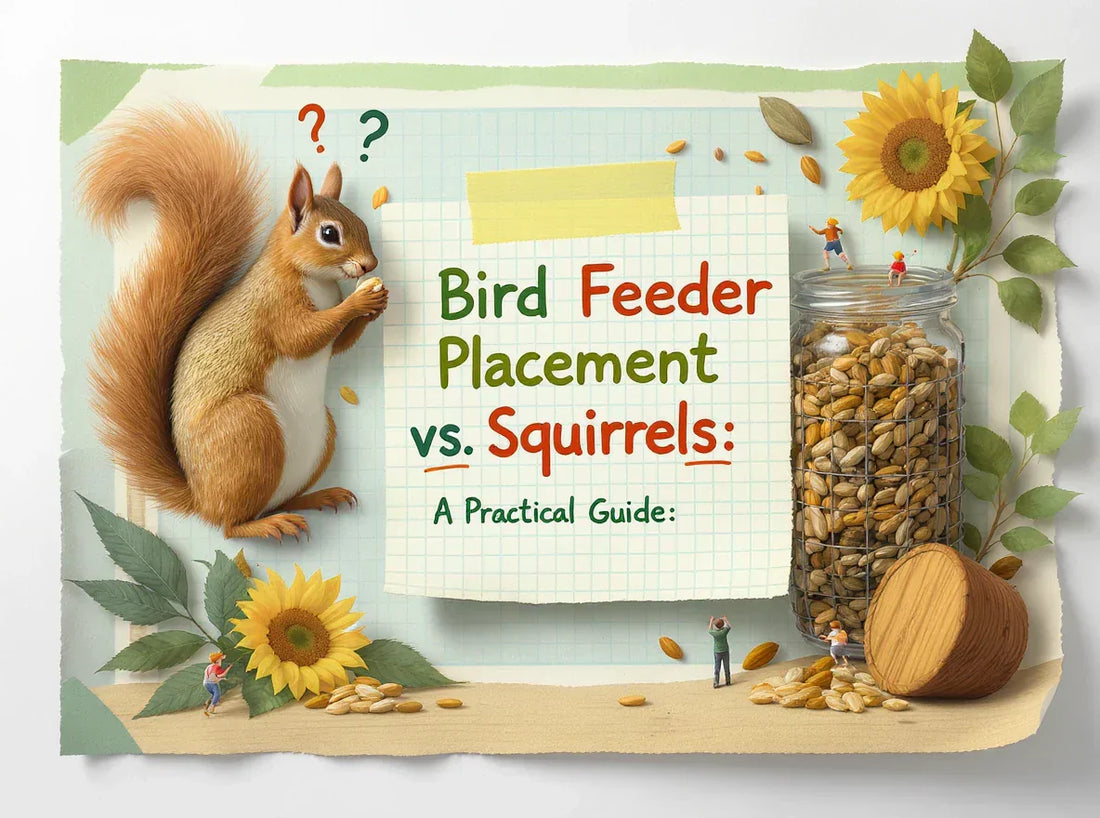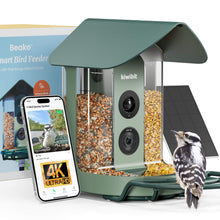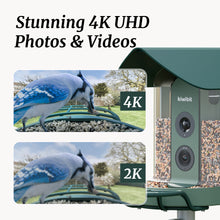Bird Feeder Placement vs. Squirrels: A Practical Guide

Ever set up a brand‑new “squirrel‑proof” bird feeder only to watch a gray acrobat steal every seed? The truth is that no matter how clever the design, the feeder’s location decides whether squirrels can reach it. Follow these distance and height rules first, then add hardware only if needed.
Why Position Beats Hardware?
Squirrels can leap 6 to 8 feet sideways and about four feet straight up. If any nearby object offers a launch pad, they will use it. Place the feeder beyond that reach and most raids never begin.
Understand the Safe Zone
Horizontal Reach Keep the feeder at least eight feet from any tree trunk, fence, deck rail, or roof edge that sits level with—or above—it.
Vertical Advantage A pole mount placed lower than five feet invites a standing jump. Raise the feeding point to about five feet and add a baffle so squirrels cannot climb the pole.
Two Reliable Placement Styles
Hanging Line Method String a thin steel cable between two sturdy points ten feet apart. Clip the feeder at the midpoint. Squirrels can neither drop from overhead branches nor reach from the supports.
Pole‑Mount Method Install a smooth metal or PVC pole. Fit a wide cone‑ or disk‑shaped baffle about four‑and‑a‑half feet above ground, then hang the feeder at the top. The slick surface denies grip and the baffle blocks any upward hop.

Fine‑Tuning the Defense
- Clear the ground beneath the feeder of stacked pots, bins, or firewood that act as stepping stones.
- Slide a spring‑coil toy (a Slinky) over the pole; when squirrels attempt to climb, the coil drops them gently back down.
- Swap to safflower seed if local squirrels dislike the taste, or sprinkle a light dusting of chili powder at the pole’s base.


Key Takeaways
- Eight feet out and five feet up is the golden rule for feeder placement.
- Choose either a hanging line in open air or a smooth pole with a baffle.
- Keep the surrounding area open and clear to finish the job.
Place your feeder right, and birds will feast while squirrels sit at a respectful distance—plotting their next move somewhere else.



